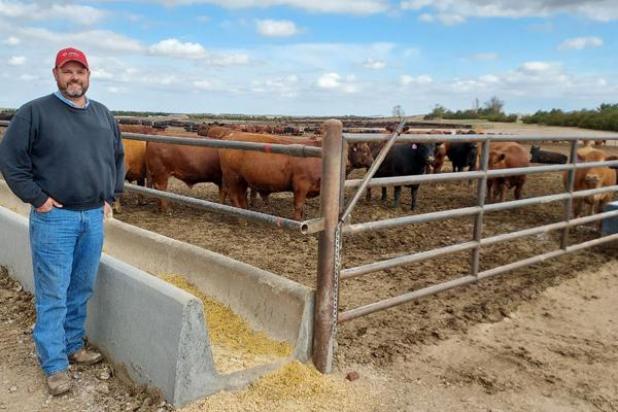
Wilson’s Feed Yards near Grant, owned by Derek Wilson (pictured), is full, like most feed yards in the area. This is mainly because of the continuing drought pushing producers to reduce their herds to ease the cost and resources to feed the animals. — Becky Uehling | Grant Tribune-Sentinel
Beef producers, feeders face whirlwind of tough decisions and high prices
Without a doubt, Southwest Nebraska and Northeast Colorado cattle producers, like producers across the United States, are facing a whirlwind of issues and tough decisions in 2022. From the war in Ukraine raising havoc on commodity prices, to inflation raising havoc with inputs, to wildfires and continued drought making feeding difficult, cattle producers are desperately trying to keep their feet on the ground.
Culling the herds
According to Jay Rempe, senior economist for the Nebraska Farm Bureau, the variables, especially drought, are already having an effect on the number of cows that ranchers are choosing to keep.
“We are already seeing liquidation of some cows and heifer calves because of the lack of pasture and pasture capacity. They are worried about not having enough feed for their animals,” Rempe said.
In fact, according to U.S. Department of Agriculture livestock analyst Shayle Shagam, cattle on feed was at 12.1 million head on April 1. This is the highest number since the USDA series began in 1996, he said. Shagam contributes this to drought.
“This is the time of year that producers are normally thinking about retaining animals and expanding their herd. But, because they are facing dry conditions, and they don’t have the forage and the cost of bringing in forage is substantial, there may be some instances where producers are being forced to put animals in feedlots rather than breed them,” Shagam stated during his USDA Newsline Report on April 26.
The movement to a feeder isn’t just taking place in Nebraska but across the entire western half of the United States, Rempe said.
“It seems that there are a lot of placements being made to Nebraska feedlots, which indicates movement of cattle out of other states into Nebraska. There is not enough pasture in states where the drought is worse, like Montana, Colorado, New Mexico and Arizona,” Rempe said. “We are seeing the herd size shrink.”
Read the full article in our FREE Salute to Beef section. Click here: https://publisher.etype.services/Holyoke-Enterprise/e-paper-special-edit...
